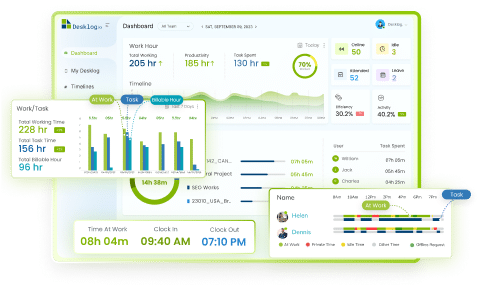To-do lists: lifesavers or stress triggers? The truth is, they can be either, depending on your approach. To make it a lifesaver, a perfect task prioritisation is important.
But with countless responsibilities vying for our attention, knowing how to prioritize can make the difference between success and chaos. Focusing on the right tasks at the right time, can maintain a clear direction and achieve a balanced approach to your work & personal life.
Here, we’ll walk you through the world of task prioritization techniques. We’ll explore 10 powerful methods to help you identify the most important tasks, eliminate distractions, and finally achieve the optimum state of productivity. Let’s get started!
What Is A Prioritization Technique?
A prioritization technique is the process of making informed decisions about the order of completing tasks based on factors like importance and due dates. But prioritization techniques aren’t limited to regaining control over workplace tasks. They’re also useful for managing competing priorities from your family, friends, and even that part of your brain that’s always on the lookout for side projects.
The Prioritization Problem: Why We Struggle?
Task prioritization is a critical skill for effective time management, yet many of us find it challenging to master. The struggle to prioritize tasks stems from several underlying factors. Below listed are the problems faced while prioritizing tasks.
1. Overwhelming Task Lists
Modern life bombards us with an endless stream of tasks, both big and small. When faced with a long list of to-dos, it’s easy to feel overwhelmed and unsure where to start. This overload can affect our ability to prioritize effectively, leading to procrastination and inefficiency.
2. Lack of Clear Goals
Without clear, defined goals, task prioritization becomes a guessing game. If you’re unsure about your primary objectives, distinguishing between important and less critical tasks is difficult. This can result in spending time on low-impact activities while high-impact tasks become delayed.
3. Urgency vs. Importance
We often confuse urgent tasks with important ones. Urgent tasks demand immediate attention but aren’t aligned with long-term goals. Conversely, important tasks contribute significantly to our objectives but may not have deadlines. Finding the balance between urgency and importance is a common challenge in task prioritization.
4. Emotional Biases
Emotions play a significant role in how we prioritize tasks. We might favor tasks we enjoy or those that seem less challenging, avoiding tasks that are more critical but less appealing. This emotional bias can hinder our prioritization efforts, leading to procrastination on important tasks.
5. Distractions and Interruptions
The digital age is rife with distractions. Constant notifications, emails, and social media interruptions can disrupt our focus and derail our prioritization efforts. These distractions make it hard to maintain a clear, organized approach to managing our tasks.
6. Lack of Effective Techniques
Many struggle with task prioritization because they haven’t learned effective techniques. Without the right strategies, even the most well-intentioned efforts can fall short. Learning and applying proven task prioritization methods is essential for overcoming these challenges.
10 Task Prioritization Techniques
With the right prioritization techniques, you can manage your workload more efficiently, reduce stress, and ensure that you’re always focusing on the tasks that matter most. In this section, we’ll explore ten effective task prioritization techniques that can transform the way you handle your daily responsibilities.
1. Priority Matrix
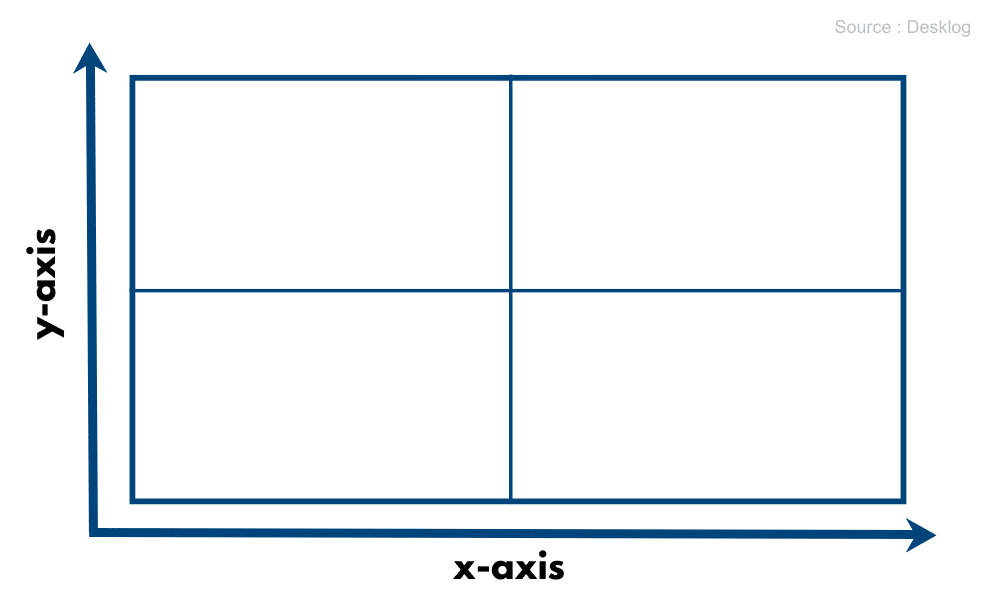
The Priority Matrix technique involves organizing your tasks into a four-quadrant matrix, utilizing x and y axis to represent different values. The x-axis and y-axis each denote a specific criteria, allowing you to assess tasks based on these values. Consequently, each quadrant of the matrix signifies priority levels determined by the assigned criteria.
Eisenhower matrix

The Eisenhower Matrix, a task prioritization technique, offers a structured approach to managing tasks by dividing them into four quadrants based on their urgency and importance. With this method, the x-axis denotes urgency, while the y-axis represents importance. This arrangement results in four distinct categories, each guiding you on where to focus your efforts:
-
Important but Not Urgent
-
Important and Urgent
-
Urgent but Not Important
-
Not Urgent or Important
To utilize the Eisenhower Matrix effectively, assess each task based on its urgency and importance, then place it in the corresponding quadrant. By doing so, you gain clarity on which tasks deserve your immediate attention, which can be scheduled for later, and which can be delegated or eliminated altogether.
Impact effort matrix
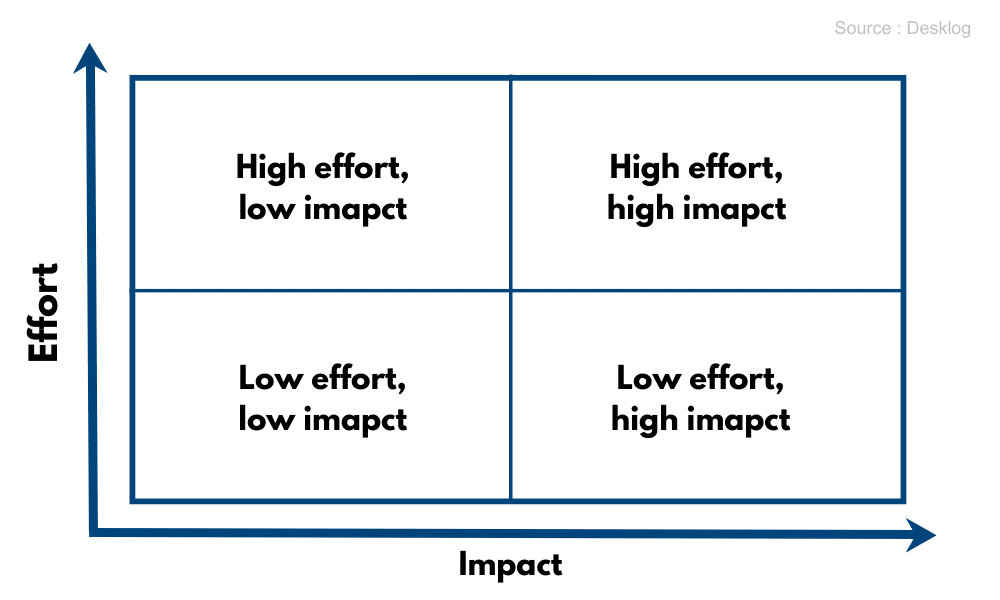 In the Impact-Effort Matrix, the x-axis shows impact, while the y-axis signifies effort. This
setup results in four distinct quadrants, each representing different combinations of effort and
impact:
In the Impact-Effort Matrix, the x-axis shows impact, while the y-axis signifies effort. This
setup results in four distinct quadrants, each representing different combinations of effort and
impact:
-
High effort, low impact
-
High effort, high impact
-
Low effort, high impact
-
Low effort, low impact
To allocate your tasks effectively, assess the level of effort required for each task alongside its potential impact. Tasks falling into the “Low effort, high impact” quadrant should be prioritized as top tasks, followed by those in the “High effort, high impact” quadrants.
Cost value matrix
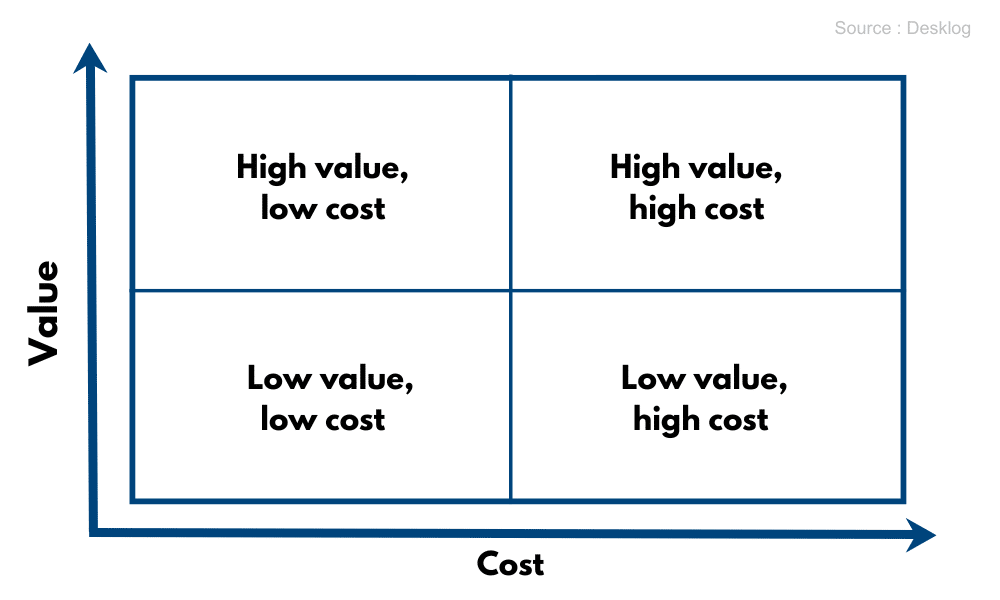 In the Cost-Value Matrix, the x-axis denotes cost, while the y-axis represents value. This
configuration results in four distinct categories, each reflecting different combinations of
cost and value:
In the Cost-Value Matrix, the x-axis denotes cost, while the y-axis represents value. This
configuration results in four distinct categories, each reflecting different combinations of
cost and value:
-
High value, low cost
-
High value, high cost
-
Low value, high cost
-
Low value, low cost
Assess the anticipated cost (in terms of time or resources) and the expected value of each task. Tasks in the “High value, low cost” quadrant need a quick approach, while those in the “Low value, high cost” quadrant can be avoided.
2. MoSCoW Prioritization Method
The MoSCoW method simplifies task prioritization by categorizing every item on your to-do list into one of four categories:
M – Must do: These tasks are non-negotiable; they must be completed.
S – Should do: While important, S tasks have a lower priority than M tasks.
C – Could do: These tasks are optional but desirable.
W – Won’t do: These tasks are unnecessary or unimportant
Once you’ve allocated each task, remove the W tasks to streamline your list. Then, focus your efforts on completing M tasks first, followed by S tasks. If time permits, do C tasks afterwards. This method allows you to prioritize effectively and concentrate on tasks that align with your goals and priorities.

Pro Tip
Kanban view is a task prioritization method where tasks are visually represented based on their status and priority.
3. ABCDE Method
The ABCDE method, popularized by Brian Tracy in his book “Eat That Frog,” provides a structured approach to task prioritization. Much like the MoSCoW technique, it involves categorizing tasks into five distinct categories
A tasks: These are your top priorities, tasks that must be completed.
B tasks: While important, B tasks are secondary to A tasks.
C tasks: These are tasks that would be needed to accomplish but are not critical.
D tasks: Tasks suitable for delegation to others.
E tasks: Tasks that can be eliminated altogether.
Expanding on the MoSCoW method, the ABCDE approach emphasizes not only identifying tasks to be done but also delegating tasks to others and eliminating non-essential ones.
4. Scrum Prioritization Method
Scrum prioritization (also referred to as Agile prioritization) is a prioritization method that relies on ordering your tasks based on both priority and sequence. This technique works particularly well when you have to take sequence into account.
In Scrum prioritization, you evaluate each task on your list using three criteria:

How important is this task?

How important is it compared to the other tasks on this list?

Is any other task dependent on this task?
Then, using the answers to these questions, you assign each a unique number from one to n (where n is the total number of tasks on your list).
Scrum prioritization works well on its own, but it also pairs really well with other techniques like the MoSCoW or ABCDE method. After categorizing your tasks by priority (as M, C, and W or A, B, and C), you can begin sequencing the tasks in order of how you plan to complete them.
5. Bubble Sort Method
The Bubble Sort method is a useful way to figure out which tasks on your list are most important. This is especially helpful when you feel like everything is urgent.
Here’s how it works:
Begin with a horizontal grid and assign each task to a cell.
 Compare the first two tasks and ask yourself, “Which task is more important?” Move the more
important task to the left. For instance, if Task 2 is more critical than Task 1, swap their
positions accordingly.
Compare the first two tasks and ask yourself, “Which task is more important?” Move the more
important task to the left. For instance, if Task 2 is more critical than Task 1, swap their
positions accordingly.
 Proceed to compare the next two tasks in the list. Again, determine which task holds greater
importance and move it one cell to the left.
Proceed to compare the next two tasks in the list. Again, determine which task holds greater
importance and move it one cell to the left.
 Continue this process until you reach the end of the list.
Continue this process until you reach the end of the list.
 Once you’ve reached the end, repeat the entire process from the beginning. Continue until every
task has been positioned to the left of a less-important task.
Once you’ve reached the end, repeat the entire process from the beginning. Continue until every
task has been positioned to the left of a less-important task.

Here you can eventually establish a prioritized list where tasks are arranged from left to right according to their priority levels. This method offers a straightforward & effective way to organize tasks and manage priorities.
6. Most Important Task (MIT) Method
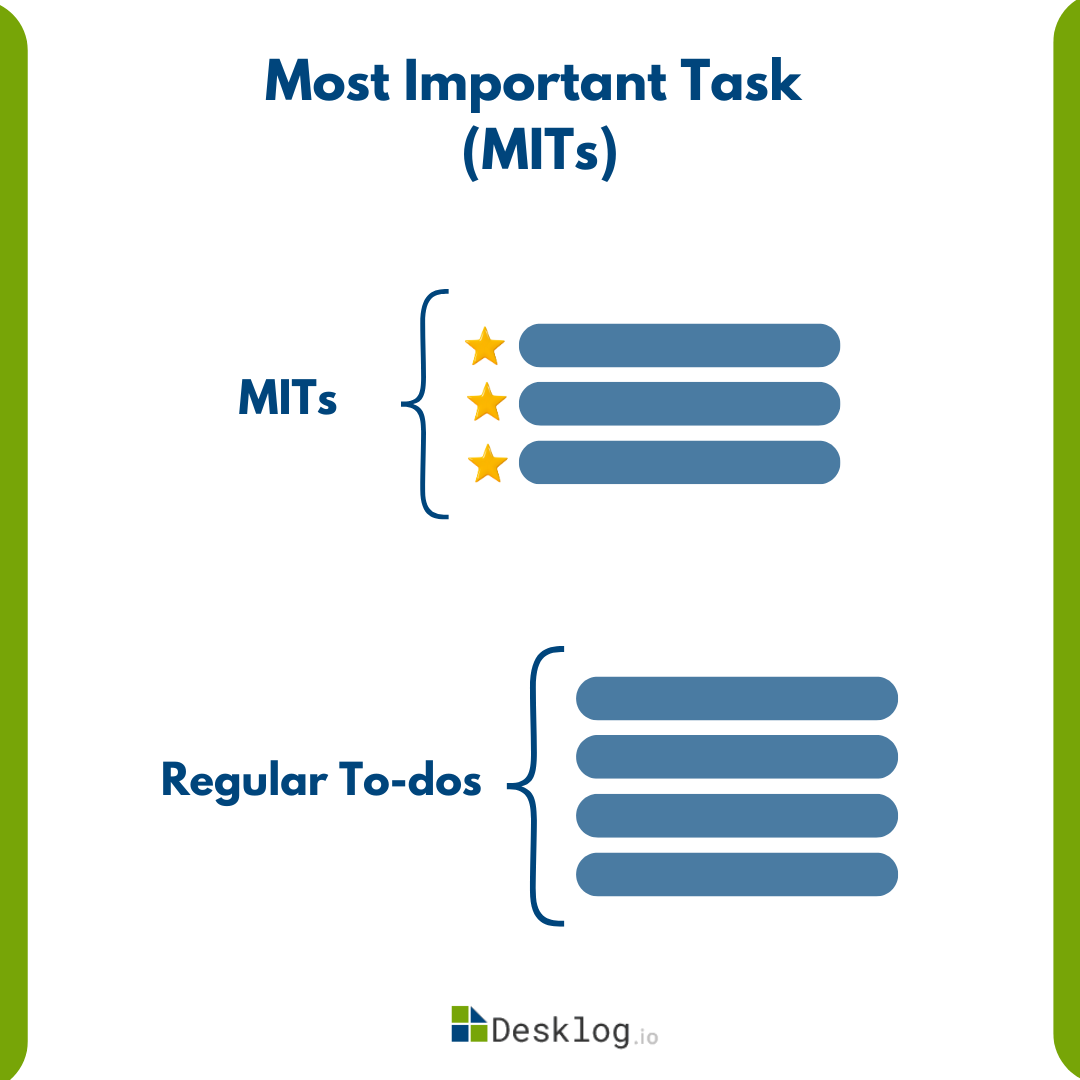
The Most Important Task (MIT) method, popularized by Leo Babauta, offers a refreshingly simple approach to task prioritization. Rather than sorting through an entire to-do list, start each morning by selecting one to three MITs—tasks that are crucial for the day ahead.Ensure that at least one of your MITs aligns with your overarching goals. By doing so, you make daily progress towards your aspirations.
While you may accomplish more tasks throughout the day beyond your MITs, setting aside time each morning to identify your Most Important Tasks (MITs) and set deadlines ensures you consistently focus on the most important ones. One of the advantages of the MIT task prioritzation method is its simplicity – you don’t necessarily need a comprehensive to-do list to utilize it effectively.

Pro Tip
Utilizing a project tracking software could benefit your effort in task prioritization by tracking the time spent on each task.
7. The Ivy Lee Method
The Ivy Lee Method, similar to the MIT method, offers a straightforward approach to daily task prioritization:

At the conclusion of each workday, select the six most crucial tasks to do the following day.

Arrange these six tasks in order of priority, ensuring clarity on which task to begin with.

Upon starting work the next day, focus solely on the first task on your prioritized list until it’s completed.

Proceed to tackle the subsequent tasks in the same manner, adhering to the predetermined order. Continue this process until all six tasks have been accomplished, and then repeat the cycle daily.
8. 1-3-9 Prioritization Technique
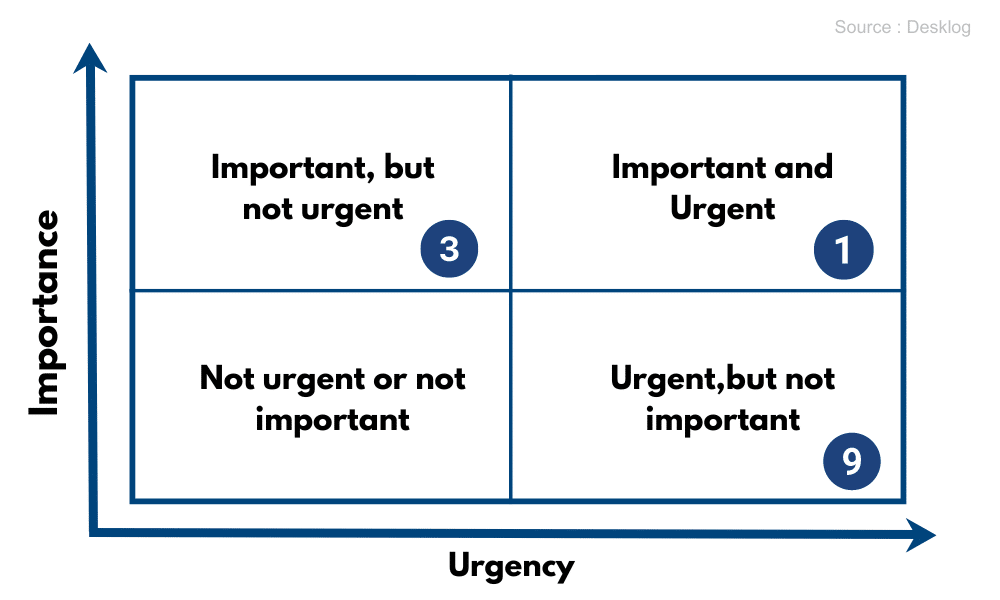 The 1-3-9 prioritization technique offers a balanced approach to task management, integrating elements from the MoSCoW, MIT, and Ivy Lee methods:
The 1-3-9 prioritization technique offers a balanced approach to task management, integrating elements from the MoSCoW, MIT, and Ivy Lee methods:
Each day, aim to accomplish 13 tasks categorized as follows:
One critical task (like an M task from MoSCoW)
Three important tasks (similar to S tasks from MoSCoW)
Nine nice-to-do tasks (resembling C tasks from MoSCoW)
Begin by ordering your lists of three and nine tasks based on priority. Then, systematically complete your critical task, followed by your three important tasks in their prioritized sequence. Finally, address and complete your nine nice-to-do tasks in their designated order.

Pro Tip
You can also use the 1 3 5 rule to make a to do list for your projects, which is also a task prioritization technique.
9.Two List Technique
Warren Buffett’s Two Lists technique offers a straightforward method for task prioritization:
Begin by listing down 25 tasks you wish to accomplish. Once completed, identify and circle the five most critical items on the list.
Next, organize your results into two distinct lists:

Your “to-do” list comprises the five tasks you circled, representing your highest priorities.

Your “don’t-do (yet)” list consists of the remaining 20 tasks that weren’t circled.
Direct your focus towards completing all the tasks outlined on your first list. Only after accomplishing these top priorities should you shift your attention to the tasks listed on your second list.
10. Pareto principle (80/20 rule)
The Pareto Principle, known as the 80/20 rule, highlights that 80% of results often come from just 20% of the effort. In simple terms, a minority of tasks contribute the majority of results.
By focusing on the most important tasks, the 20% that have the biggest impact – you can achieve much greater results. While there’s no strict guideline within the Pareto principle for identifying this critical 20%, various strategies can inform your selection process. For instance, you might consider tasks designated as M tasks in the MoSCoW method or those categorized as Low effort, high impact tasks according to the effort-impact priority matrix.
In essence, the Pareto Principle encourages a focused approach to task prioritization, directing attention and resources towards the tasks that yield the most substantial returns, thereby maximizing productivity and efficiency.

Pro Tip
Creating project backlogs is the best way to prioritize your work.
Bonus Tip: How To Prioritize Tasks For Teams
Now, if you’re working on a larger scale, it’s better to use some other task prioritization technique such as,
Kano model
Weighted Shortest Job First (WSJF)
RICE scoring model
1. Kano Model
This technique focuses on understanding customer satisfaction through product features. While not directly related to prioritizing everyday tasks, it provides a valuable framework that can be adapted for task prioritization. Here’s how:
1. Identify your customers: In this case, it could be yourself, your team, or even your manager.
2. List your tasks as features: What are the individual tasks that contribute to your overall goal?
3. Categorize tasks using the Kano Model: There are five categories:
Basic: These are essential tasks that cause dissatisfaction if not completed (Higher priority).
Performance: These tasks increase satisfaction as their level of completion improves (Prioritize based on importance and impact).
Excitement: These tasks delight customers even if not expected (Prioritize when time allows).
Indifferent: These tasks have little impact on satisfaction (Low priority).
Reverse: These tasks can actually cause dissatisfaction if completed (Avoid or delegate).
2. Weighted Shortest Job First (WSJF)
This technique is perfect for prioritizing tasks in a queue or backlog, often used in software development. It considers two factors:

Job size: The estimated time to complete each task (shorter is better).

Weight: The importance or urgency of the task (higher is better).
A WSJF score is calculated by dividing the weight by the job size. Tasks with the highest WSJF scores are tackled first. This method ensures that important tasks are not delayed by larger but less urgent ones.
3. Rice Scoring Model
This simple yet effective method is great for prioritizing marketing initiatives or product features. RICE is an acronym for:

Reach: How many people will be impacted by this task?

Impact: How significantly will this task affect those reached?

Confidence: How confident are you in your estimates of Reach and Impact? (Scored from 0-high)

Effort: How much time and resources are required to complete the task? (Scored as low, medium, or high).
Multiply the Reach, Impact, and Confidence scores to get a final score. Tasks with the highest scores are prioritized. The Effort score helps weigh the potential benefits against the investment required.
By understanding these different task prioritization techniques, you can choose the one that best suits your specific needs and goals.
How to Pick the Right Task Prioritization Technique
Selecting the right task prioritization technique can significantly enhance your productivity and ensure that your efforts are aligned with your goals. With various methods available, it’s essential to choose one that best suits your specific needs and context. Here’s a guide to help you decide which task prioritization technique to use:
Understand Your Objectives and Scope
Begin by identifying the primary objectives and scope of your tasks. Are you managing personal tasks, team projects, or large-scale organizational initiatives? Different scales and contexts require different approaches.
Evaluate the Nature of Your Tasks
Consider the characteristics of your tasks. Are they customer-facing features, internal improvements, or strategic initiatives? Techniques like the Kano Model are excellent for customer-centric tasks, while WSJF is better suited for Agile project management
Assess Your Resources and Constraints
Determine the resources available to you, such as time, budget, and manpower. Techniques like the RICE Scoring Model are valuable when you need to consider multiple dimensions such as reach, impact, confidence, and effort.
Match Techniques to Your Workflow
Align the prioritization technique with your existing workflow. For example, if you follow Agile methodologies, WSJF integrates seamlessly into your sprint planning processes. If your focus is on product development and customer satisfaction, the Kano Model might be more appropriate.
6. Flexibility and Adaptation
Be open to adapting and combining techniques. Sometimes, a hybrid approach may work best. For instance, you might use the RICE Scoring Model to prioritize strategic initiatives and the Kano Model for customer-driven feature development.
7. Review and Iterate
Regularly review the effectiveness of the chosen technique and be prepared to iterate. The dynamic nature of work environments means that the best technique today might need adjustment tomorrow.
By carefully considering these factors, you can select the most suitable task prioritization technique for your needs, ensuring that your efforts are focused on the tasks that will yield the highest impact and drive you closer to your goals.
Conclusion
Mastering task prioritization techniques is essential for achieving productivity and success in both personal and professional endeavors. Remember, the key to effective task prioritization lies in understanding your objectives, evaluating the nature of your tasks, and aligning the right technique with your workflow.
Incorporate these task prioritization techniques into your daily routine to navigate your to-do list with confidence and clarity. With the right method in place, you’ll be well-equipped to tackle your most important tasks and make significant strides towards your goals.
FAQ
1 What are three ways to prioritize?
List things that are important to you.
Highlight the priorities where your effort will make the biggest impact.
Cross out the rest.
Choose one action today that supports one of these priorities.
2What are the 4 P’s of prioritization?
The four Ps of prioritization are: Prioritize, Plan, Prepare, and Perform
3How do you prioritize your workload?
The prioritization process begins with creating a task list and identifying deadlines. Next, assess the importance, urgency, effort, and resources required for each task. Prioritize your list by focusing on the most urgent tasks, considering dependencies, and breaking down complex tasks as needed.
4How to prioritize yourself?
Engage in regular exercise
Eat nutritious, balanced meals and stay hydrated
Make sleep a top priority
Incorporate relaxing activities into your routine
Set clear goals and priorities
Practice gratitude daily
Maintain a positive outlook
Stay connected with others
5What features should I look for in attendance management software?
Key features include time tracking, leave management, customizable workflows, reporting, payroll integration, mobile accessibility, and user-friendly interface.
